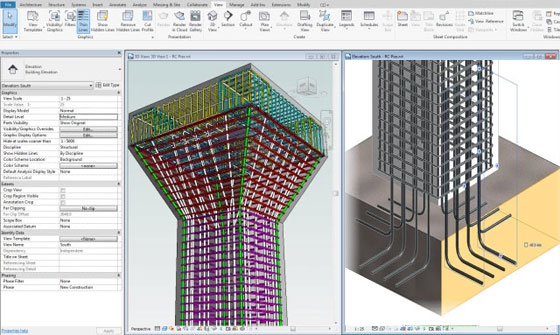In this article the new features
of Revit are explained. Also there is some information about Revit that will
help to understand their work properly. The features and work of Autodesk and
Revit are discussed here.
This article also states about
the improvements of the new features, it will help the users to create models
easily, there are use of curves and straight lines that will give the designs a
new look. Here is the following link for observing the diagrams: revitstructureblog.wordpress.com.
Autodesk Revit is building
information modeling software for architects, structural engineers, MEP
engineers, designers and contractors developed by Autodesk. It allows users to
design a building and structure and its components in 3D, annotate the model
with 2D drafting elements, and access building information from the building
model’s database.
Revit
can be used as a very powerful collaboration tool between different disciplines
in the building design sphere. The different disciplines that use Revit
approach the program from unique perspectives. The Revit work environment
allows users to manipulate whole buildings or assemblies or individual 3D
shapes. An experienced user can create realistic and accurate families ranging
from furniture to lighting fixtures, as well as import existing models from
other programs.
•
In each release of Revit it is seen that a continuous trickle is there in new features
and improvements to the Reinforced Concrete Modeling and detailing
capabilities. Most of them are already firmly established and now Autodsek
moves on to the reinforcement of complex concrete forms and cross platform
workflows.
• It is previously stated
Autodesk have some stiff competition and are quickly closing the gaps. There is
also an expected delivery of a BIM project which is a complete 3D model and it
may longer be appropriate to issue flat 2D drawings and a bending schedule.
Some new tools are very useful in Civil Projects as Tunnels, Bridges and
roadside structures.
• The new features are tested and at first the main function of the reinforcement of complex concrete features are shown. The new functions are very useful and save a lot of time. It need extra control over double curves and twists and likely have to use something like Dynamo to place ‘real’ reinforcement in a logical way.
• Another refurbished tool is the
Rebar graphical constrains. This tool enables reinforcement bar to be constrained
in 3D views as well as the traditional 2D views. The user can selected the
rebar plane or the end points of the bar and then constrained to a relevant
plane on the host element.
• The reinforcement bar also has Bar Handles that allows the physical leg lengths to be dynamically edited. It is easy now to directly import a 3D solid from another CAD application and host reinforcement directly into the elements.
• The 3D ramp has been modeled in AutoCAD and then directly imported and reinforced within Revit. In conclusion Autodesk continue to strengthen the Revit application and make the legacy 2D detailing a think of past.

~~~~~~~~~~~~~~~~~~~~~~~~
Published By
Rajib Dey
www.bimoutsourcing.com
~~~~~~~~~~~~~~~~~~~~~~~~